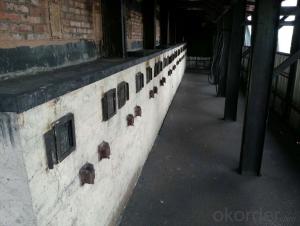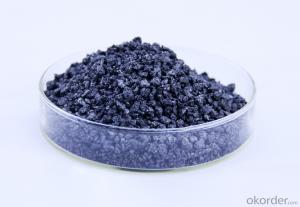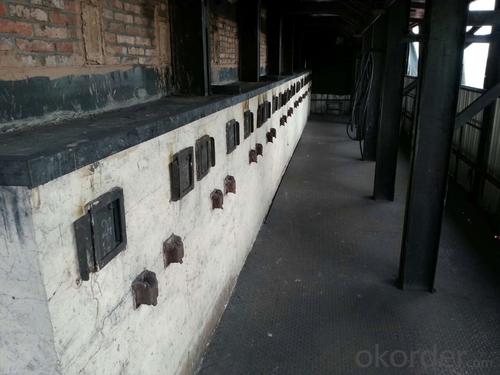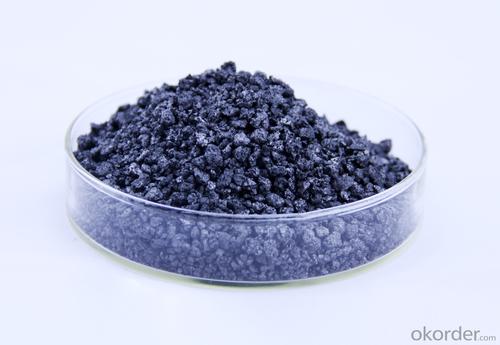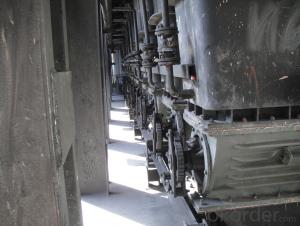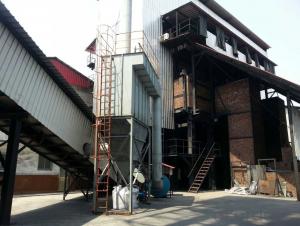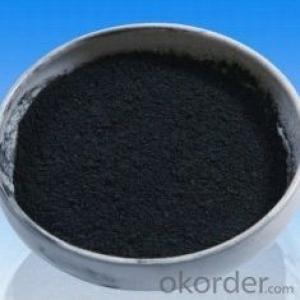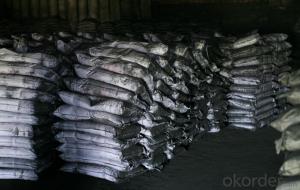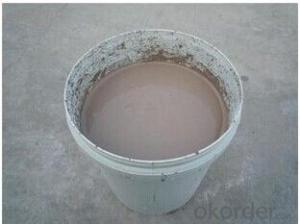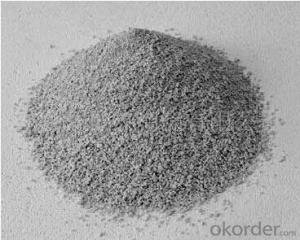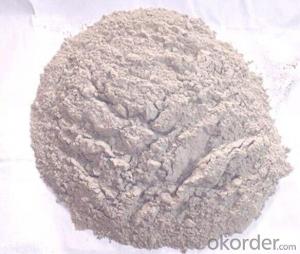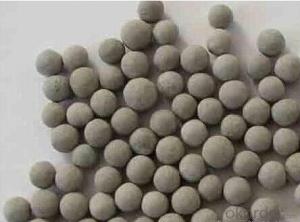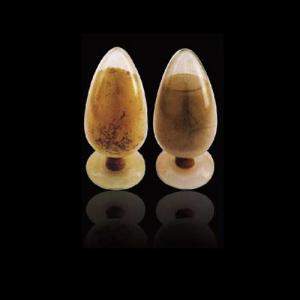Monolithic Refractories Low Nitrogen Carbon Raiser Graphite Pitch Coke for Iron and Steel Industry
- Loading Port:
- Shekou
- Payment Terms:
- TT OR LC
- Min Order Qty:
- 20 m.t
- Supply Capability:
- 1000 m.t/month
OKorder Service Pledge
OKorder Financial Service
You Might Also Like
Factory Background
The factory is majorly running and operating carbon additive (pitch coke, calcined petroleum coke and anthracite), low nitrogen carbon additive, and brake pad making material. Company is the long term supplier of Sinosteel Corporation, Shanghai Carbon Corporation, the plant of SGL Group the Carbon Company in China and some largest special carbon products producing plants.
YUAI also supplies huge amout of high quality carbon additive and graphite carbon additive to steel plants, foundries and ferrotungsten plants. YUAI has been assigned by BAO STEEL as the only organization for processing pitch coke for export purpose. The group’s major products are constantly exported to Japan, Korea, Malaysia, South East Asia countries, Europe and America, which receive praises by our consumers.
The group has invested numbers of calcinators in Anhui China to ensure the capability of producing and processing huge amount of carbon additive. Further investment is on process. According to the orders from customers, YUAI is able to processing and providing different specifications of carbon additive and other products. To provide best quality of products and to offer customers most satisfied service is YUAI’s operating objectives.
Calcined Petroleum Coke
FC:98.5%min,
S:0.5%max
A:0.8%max
V:0.7%max
Mositure:0.5%max
Size:1-5mm
This product is mainly used in steel-making and foundry. Calcined Petroleum Coke
Calcined Petroleum Coke comes from delayed coke which extracted from oil refinery. Although Calcined Petroleum Coke contains a little bit higher level of sulfur and nitrogen than pitch coke, the price advantage still makes it widely used during steel-making and founding as a kind of carbon additive/carburant.
Technology:
Laborary Equpment
In our lab,we has a high precision balance,mullfe furnace,sample making machine, dring box,sulfur measurement instrument and other calibratiing equipments.As a result,before deliverung to our customers,our products have to pass a strict test to ensure the quality and components.The testing reports will be sent to our customers to confirm untill they satisfy with it.
Packaging & Delivery
Packaging Detail:25kg paper bag into 1t weaving bag 5kg, 10kg and 20kg weaving bag into 1t weaving bag 25kg weaving bag put on pallet covered with entanglement wrap product direct into packing bag 25kg paper bag put on pallet covered with entanglement Wrap 25kg weaving bag into 1t weaving bag.
Delivery Details: 7 days
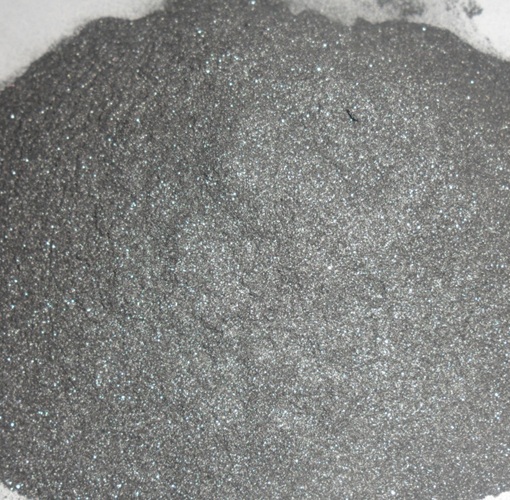
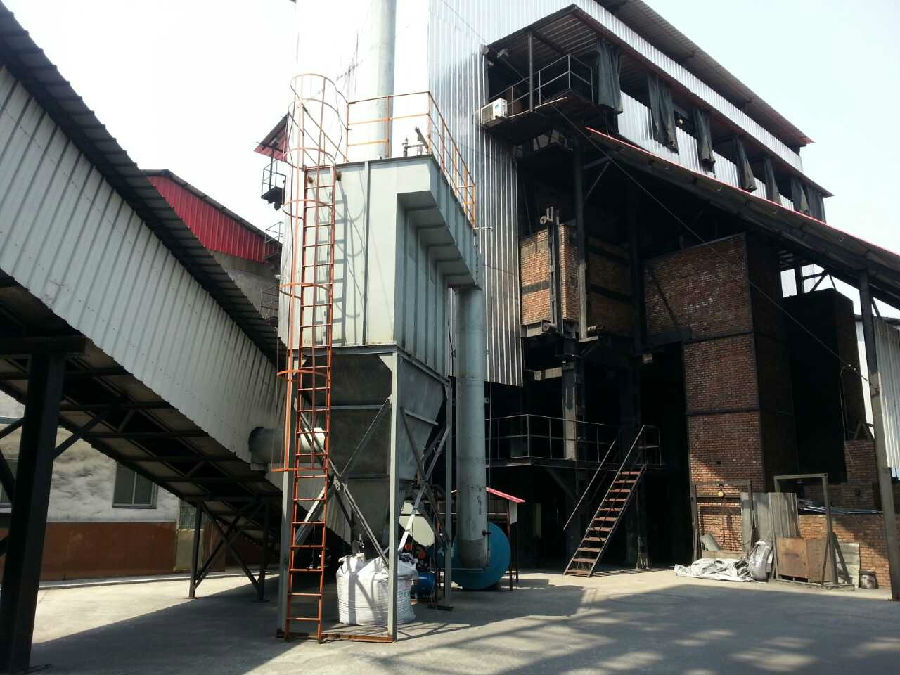
- Q: What are the common failure modes of monolithic refractories in iron and steel applications?
- Monolithic refractories, known for their exceptional thermal shock resistance, high temperature stability, and mechanical strength, find extensive use in iron and steel applications. However, like any other material, they are susceptible to failure. Numerous failure modes are associated with monolithic refractories in iron and steel applications. 1. Spalling, the detachment of refractory material from the surface, stands as one of the most prevalent failure modes. This detachment occurs due to thermal cycling, mechanical stress, or chemical reactions. Mismatched thermal expansion coefficients between the refractory and the surrounding structure can lead to cracking and subsequent detachment. 2. Erosion, another common failure mode, arises when the refractory material encounters the erosive action of molten metal, slag, or gases. Physical impact from flowing metal or chemical attack by corrosive slag components can contribute to erosion. This results in the loss of refractory material, reduced lining thickness, and compromised performance. 3. Corrosion, a significant failure mode, particularly affects iron and steel applications in contact with aggressive atmospheres or molten metal. The interaction between the refractory material and corrosive agents, such as oxides, sulfides, or alkalis present in the environment, leads to corrosion. Corrosion products weaken the refractory lining and shorten its lifespan. 4. Thermal shock, caused by extreme temperature fluctuations, poses a risk to monolithic refractories in iron and steel applications. Rapid heating or cooling can trigger thermal shock, resulting in cracking and failure of the refractory material. Thermal shock can occur due to uneven heating or cooling, sudden temperature changes, or thermal gradients within the refractory lining. 5. Abrasion is a potential failure mode in specific iron and steel applications, where monolithic refractories are exposed to abrasive wear. This wear occurs when the refractory lining comes into contact with solid particles like metallic oxides, slags, or raw materials. The repeated impact and rubbing action of these particles cause erosion and abrasion of the refractory material, leading to failure. To mitigate these failure modes, it is crucial to select appropriate refractories, employ proper installation techniques, and practice regular maintenance. Regular inspections, repair of damaged areas, and the application of protective coatings can greatly enhance the lifespan and performance of monolithic refractories in iron and steel applications.
- Q: How do monolithic refractories perform in rotary hearth furnace applications?
- The performance of monolithic refractories in rotary hearth furnaces is well-known. These refractories are specifically designed to endure the extreme temperatures and harsh conditions found in these furnaces, making them the ideal choice for this particular application. One major advantage of monolithic refractories is their resistance to thermal shock. In rotary hearth furnaces, the material being processed is subjected to rapid heating and cooling cycles, which can cause significant stress on the refractory lining. Monolithic refractories have excellent thermal conductivity and low thermal expansion, enabling them to withstand these temperature fluctuations without cracking or spalling. Another important characteristic of monolithic refractories is their exceptional resistance to abrasion. In rotary hearth furnaces, the material being processed may contain abrasive particles that can wear down the refractory lining over time. Monolithic refractories are formulated with high-quality aggregates and binders that provide superior abrasion resistance, resulting in a longer lifespan for the lining. Moreover, monolithic refractories exhibit good chemical resistance, making them suitable for various applications in rotary hearth furnaces. They can withstand exposure to different chemical substances, such as molten metals, slags, and gases, without undergoing significant chemical reactions or degradation. This chemical stability ensures that the refractory lining remains intact and performs well in the demanding environment of a rotary hearth furnace. Additionally, monolithic refractories offer excellent flexibility during installation. Unlike traditional brick or tile refractories, which require complex installation procedures, monolithic refractories can be easily shaped and applied in-situ using methods like gunning, casting, or ramming. This flexibility allows for quicker and more efficient repairs or replacements of the lining, reducing downtime and maintenance costs. In conclusion, monolithic refractories are highly reliable and efficient in rotary hearth furnace applications. Their ability to withstand thermal shock, abrasion, and chemical attack, along with their easy installation, make them the preferred choice for lining materials in these demanding environments.
- Q: How do monolithic refractories prevent heat loss through convection?
- Monolithic refractories prevent heat loss through convection by providing a continuous and dense structure that minimizes the movement of air or gases, thereby reducing the transfer of heat through convection currents.
- Q: How do monolithic refractories enhance the performance of ladles and tundishes?
- Monolithic refractories enhance the performance of ladles and tundishes by providing superior thermal insulation, high resistance to thermal shock, and excellent chemical resistance. This improves their durability, reduces heat loss, and minimizes the risk of refractory failure, resulting in increased operational efficiency and extended service life of ladles and tundishes.
- Q: What are the considerations for repairing and relining monolithic refractories?
- When it comes to repairing and relining monolithic refractories, there are several key considerations that need to be taken into account. Firstly, it is important to assess the extent of the damage or wear to the refractory lining. This can be done through visual inspection, as well as non-destructive testing techniques such as ultrasonic or thermal imaging. Understanding the severity and location of the damage will help in determining the appropriate repair or relining method. Another consideration is the type of monolithic refractory material being used. Different materials have different properties and performance characteristics, and this needs to be considered when selecting the repair method. For example, some materials may require high-temperature curing or specialized equipment for installation. The operating conditions of the refractory lining also need to be taken into account. Factors such as temperature, chemical exposure, and mechanical stress can affect the performance and longevity of the lining. The repair or relining method should be selected to ensure that it can withstand these conditions and provide long-lasting protection. Additionally, the downtime and cost implications of the repair or relining process need to be considered. Some methods may require longer curing or drying times, which can result in extended shutdown periods. It is important to weigh the benefits of the repair or relining against the potential production losses and expenses associated with the downtime. Lastly, it is crucial to follow industry standards and guidelines when repairing or relining monolithic refractories. This ensures that the repairs are done correctly and in a safe manner, minimizing the risk of future damage or failure. Consulting with refractory experts or manufacturers can provide valuable insights and guidance in this regard. In conclusion, the considerations for repairing and relining monolithic refractories include assessing the extent of damage, understanding the properties of the refractory material, considering the operating conditions, evaluating downtime and cost implications, and following industry standards and guidelines.
- Q: What are the recommended drying procedures for monolithic refractories?
- The recommended drying procedures for monolithic refractories typically involve a gradual and controlled process to ensure the refractory material is properly cured and hardened. This typically includes a pre-drying phase where the refractory is heated slowly to remove any residual moisture. After pre-drying, a gradual increase in temperature is applied to further remove moisture and allow for proper chemical reactions to occur within the refractory. It is important to closely follow manufacturer guidelines and consider factors such as refractory thickness, ambient humidity, and available drying equipment to determine the specific drying procedures for each application.
- Q: How do monolithic refractories perform in electric arc furnace roof applications?
- Monolithic refractories perform well in electric arc furnace roof applications due to their excellent thermal shock resistance, high temperature stability, and superior corrosion resistance. Additionally, monolithic refractories offer easy installation and maintenance, making them a reliable choice for electric arc furnace roofs.
- Q: What are the key properties and characteristics of monolithic refractories?
- Monolithic refractories are a type of refractory material that are known for their ability to be shaped or installed in a single piece or without joints. These materials are typically used in high-temperature applications where traditional brick or tile refractories may not be suitable. One key property of monolithic refractories is their excellent thermal stability. They can withstand extreme temperatures without undergoing significant expansion or contraction, making them ideal for use in furnaces, kilns, and other heat-intensive environments. This property allows monolithic refractories to maintain their structural integrity and provide long-lasting performance. Another important characteristic of monolithic refractories is their high resistance to thermal shock. They can withstand rapid temperature changes without cracking or spalling, which is crucial in applications where the refractory material is exposed to alternating hot and cold conditions. This resistance to thermal shock ensures the longevity of the refractory lining and reduces the need for frequent repairs or replacements. Monolithic refractories also exhibit good mechanical strength, which enables them to withstand the mechanical stresses and loads imposed on them during use. They possess excellent load-bearing capacity and can resist abrasion, erosion, and impact, making them suitable for applications where the refractory material is subjected to mechanical wear or impact. Furthermore, monolithic refractories have the advantage of being easily installed and repaired. Unlike traditional refractories that require skilled labor and time-consuming bricklaying techniques, monolithic refractories can be cast, gunned, or sprayed into place. This ease of installation allows for faster turnaround times and reduces downtime during repairs or maintenance. Lastly, monolithic refractories offer good chemical resistance to various corrosive agents, such as acids, alkalis, and molten metals. This property makes them suitable for use in industries where the refractory material is exposed to aggressive chemical environments, such as the steel, petrochemical, and glass industries. In summary, the key properties and characteristics of monolithic refractories include excellent thermal stability, high resistance to thermal shock, good mechanical strength, easy installation and repair, and good chemical resistance. These properties make them a preferred choice in high-temperature applications where durability, reliability, and performance are of utmost importance.
- Q: How do monolithic refractories withstand the mechanical impacts in ladle lip applications?
- Monolithic refractories are able to withstand mechanical impacts in ladle lip applications due to their high density, strength, and resistance to thermal shock. These refractories are designed to have excellent impact resistance, preventing any cracks or fractures from occurring when the ladle is being handled or poured. Additionally, they have a high refractoriness, ensuring that they can withstand the extreme temperatures experienced during the metal pouring process.
- Q: How do monolithic refractories contribute to reducing downtime in iron and steel plants?
- Monolithic refractories play a crucial role in reducing downtime in iron and steel plants by offering several key advantages over traditional brick refractories. Firstly, monolithic refractories are highly versatile and can be easily molded and installed, allowing for quicker repairs and replacements. Unlike brick refractories that require time-consuming and labor-intensive processes, such as bricklaying and mortar application, monolithic materials can be directly applied in a castable or gunning form, significantly reducing the downtime required for repairs. Additionally, monolithic refractories provide better thermal insulation and improved resistance to thermal shocks, which are common occurrences in iron and steel plants. This enhanced thermal performance helps to maintain stable operating temperatures and prevents sudden temperature fluctuations that can lead to refractory failure and subsequent downtime. By minimizing these thermal shocks, monolithic refractories increase the overall lifespan of the refractory lining, reducing the need for frequent repairs and replacements. Furthermore, monolithic refractories offer superior chemical resistance compared to traditional brick refractories. Iron and steel plants often encounter aggressive chemical environments due to the presence of molten metal, slag, and other corrosive substances. Monolithic refractories are specifically designed to withstand these harsh conditions, preventing chemical attacks and erosion of the refractory lining. As a result, the need for unscheduled shutdowns due to refractory degradation is significantly reduced. Lastly, monolithic refractories provide better dimensional stability, minimizing the risk of cracks and spalling that can occur due to thermal cycling and mechanical stress. This increased resistance to wear and tear ensures that the refractory lining remains intact for a longer period, reducing the frequency of maintenance and enhancing the overall operational efficiency of the iron and steel plant. In summary, monolithic refractories contribute to reducing downtime in iron and steel plants by offering faster installation, improved thermal insulation, superior chemical resistance, and enhanced dimensional stability. Their versatility and performance advantages make them a reliable choice for maintaining a reliable and efficient refractory lining, ultimately reducing the frequency and duration of plant shutdowns.
Send your message to us
Monolithic Refractories Low Nitrogen Carbon Raiser Graphite Pitch Coke for Iron and Steel Industry
- Loading Port:
- Shekou
- Payment Terms:
- TT OR LC
- Min Order Qty:
- 20 m.t
- Supply Capability:
- 1000 m.t/month
OKorder Service Pledge
OKorder Financial Service
Similar products
Hot products
Hot Searches
Related keywords
